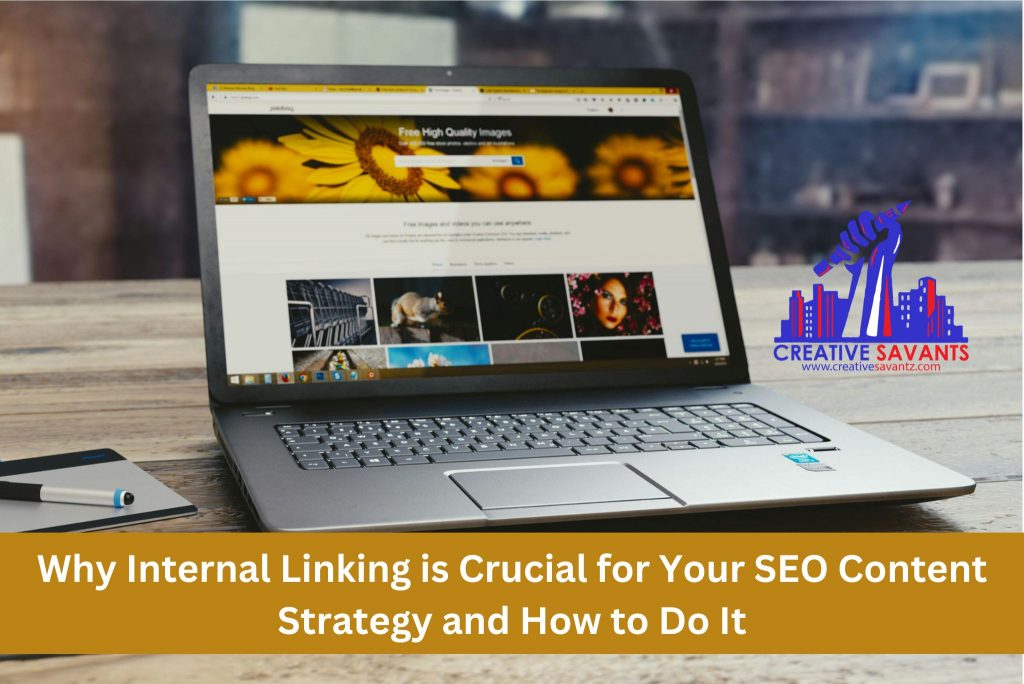Internal linking is an important yet often overlooked aspect of Search Engine Optimization (SEO). These links, which connect different pages within the same website, play a significant role in guiding both users and search engines through your content. By strategically implementing internal links, you can enhance your site’s navigation, distribute page authority, and improve your search engine rankings.
In this article, we will explore the best practices for internal linking that can help optimize your website for SEO. We’ll cover everything from the basics of internal links and their importance to advanced strategies for creating an effective linking structure that boosts your site’s performance. Whether you’re a seasoned SEO professional or just starting, this guide will provide you with actionable insights to strengthen your linking strategy and achieve better search engine results.
Check out: How to Create High-Quality SEO Content That Ranks in Google’s Featured Snippets
What are Internal Links?
Internal links are hyperlinks that link one page of your website to another page on the same domain. These links are crucial for creating an effective strategy, as they help both users and search engines navigate your website seamlessly. Unlike external links, which lead to pages on different websites, internal links keep visitors engaged with your content by directing them to related pages within your site.
Types of Internal Links
There are various types of internal links, each playing a vital role in your SEO efforts. Navigational links are typically found in menus, guiding users through the main sections of your site. Footer links often include essential pages like privacy policies or contact details. Contextual links are embedded within the content, directing users to relevant articles or products. By implementing these different types of internal links strategically, you can enhance user experience and boost your SEO efforts.
Have a look at: The Importance of User Intent in SEO Content Writing for 2025
Why Internal Links are important for SEO
Internal links are more than just a way to connect your pages—they’re a powerful tool for improving your website’s SEO. Let’s explore the key reasons why internal links are crucial for SEO:
Helping Search Engines Crawl and Index Your Site
Internal linking is a foundational element of SEO that can significantly impact your website’s performance in search engine rankings. By strategically using internal links, you can guide search engines like Google to better understand your site’s structure and content. This, in turn, helps search engines crawl and index your pages more efficiently, ensuring that your most important content gets discovered and ranked.
Improving Site Navigation and User Experience
One of the primary benefits of a well-structured strategy is improved site navigation. Internal links create a roadmap for users, guiding them to relevant content, which enhances the overall user experience. When users can easily find what they’re looking for, they are more likely to stay on your site longer, reducing bounce rates and increasing the likelihood of conversions. This improved navigation is also recognized by search engines, further boosting your SEO efforts.
Know more about: Keyword Research for SEO Content Writers: Tools and Techniques for Success
Passing Link Authority to Boost Important Pages
In addition to enhancing navigation, internal links play a critical role in passing link authority—also known as “link juice”—throughout your site. Search engines see pages that receive a high number of internal links from authoritative pages within your domain as more important. This can help boost the rankings of these key pages, driving more organic traffic to your site. For example, linking from high-authority pages like your homepage or cornerstone content to other important pages can distribute authority and improve the visibility of those linked pages.
CreativeSavantz is a professional writing service provider dedicated to delivering high-quality, SEO-optimized content. Our expert team ensures that all internal linking strategies are effectively implemented to enhance your site’s performance and visibility.
Best Strategies for Internal Linking
Creating an effective internal linking strategy is essential for maximizing the SEO potential of your website. In this section, we’ll explore key strategies that can help you in SEO success.
Link to Relevant Content
To maximize the effectiveness of your internal linking strategy, focusing on relevance is crucial. Linking to content that closely relates enhances both user experience and SEO performance. Understanding relevance involves connecting pages with similar topics or themes, which helps users and search engines understand the content relationship.
Learn more on: Skipping SEO Basics? Here’s Why Your Content May Not Reach Readers
Creating topic clusters—groups of related content around a central theme—can significantly boost your SEO internal links efforts. Tools like Surfer Audit are invaluable for finding and optimizing relevant links by evaluating content relationships. For example, a blog about digital marketing might create a cluster around “SEO Strategies,” linking a broad pillar page with more specific articles on keyword research and on-page optimization. This structured approach enhances relevance and authority, improving search engine rankings.
Use Links that Add Value
To maximize the effectiveness of your internal linking strategy, every link you use should add value to your content. Effective internal links must be contextual and descriptive, helping both users and search engines understand the relevance and purpose of the linked pages. Ensure your internal links SEO efforts include links that are clear and specific, rather than generic. For instance, instead of a vague “click here,” use descriptive anchor text like “learn more about effective SEO strategies.” This practice not only enhances user experience by providing clear navigation cues but also improves the relevance and authority of your internal linking for SEO.
Use Descriptive Anchor Text
Effective use of descriptive anchor text is essential for optimizing your internal linking strategy. Anchor text—the clickable text in a hyperlink—should convey what users will find on the linked page, enhancing both internal linking SEO and user experience. To optimize your SEO internal linking, ensure that anchor text accurately reflects the content of the linked page without resorting to keyword stuffing. Overloading anchor text with keywords can appear unnatural and negatively impact your SEO efforts. Instead, focus on creating natural, informative text that improves context and user experience.
Check out: Internal Linking is Super Critical For SEO
Additionally, vary your anchor text when linking to the same page multiple times to distribute link authority more evenly and avoid over-optimization. For instance, use different phrases like “strategies for improving SEO” instead of repeatedly using “SEO tips.” This approach supports a balanced and effective internal linking for SEO and helps maintain a robust internal linking strategy.
Add Important Links at the Top
Strategic placement of internal links is crucial for maximizing their impact, and adding important links at the top of your pages can significantly enhance your internal linking SEO. By positioning key links at the top, you ensure they are highly visible to both users and search engines. This practice improves overall site navigation and directs attention to essential content. Since users and search engines focus on the upper portions of web pages, placing important internal links here makes them more prominent and likely to be followed.
Link from High Authority Pages
To strengthen your internal linking strategy, focus on linking from high authorities within your website. These high authorities, which receive significant traffic and possess strong SEO metrics, are ideal for passing valuable link authority to other important pages. By leveraging these pages, you enhance your internal linking for SEO and distribute link authority effectively. For instance, linking from high authority pages such as your homepage or major blog posts to other key content—like in-depth guides or cornerstone articles—can significantly boost visibility and SEO performance.
Check out: Crafting SEO Headlines: Tips for Creating Click-Worthy Title headings for SEO
Link from Key Pages
Incorporating internal links from key pages on your site is crucial for a successful internal linking strategy. Key pages, such as your homepage and main navigation menus, hold significant visibility and authority, making them essential for boosting the SEO internal linking efforts of other pages. By strategically linking from these influential areas, you enhance the SEO value of linked content. For instance, linking from your homepage and primary navigation menus helps direct users to important pages, such as cornerstone articles, popular blog posts, or key product pages, thereby improving their visibility and rankings.
Avoid Excessive Linking
While internal linking is crucial for SEO, excessive linking can lead to link dilution and a poor user experience. It’s important to strike a balance to maintain the effectiveness of your internal linking strategy.
Overloading pages with too many internal links can dilute link authority and confuse both users and search engines, making your content appear spammy and reducing the value of each link. To adhere to internal linking best practices, ensure that every link has a clear purpose and adds value. Instead of cramming numerous links into a single page, space out your descriptive internal links naturally throughout your content. This approach enhances readability and ensures each link remains relevant and effective.
Know more about: 10 Essential SEO Content Writing Techniques You Need to Master
Update Existing Links
Maintaining an effective internal linking strategy requires regular updates to ensure all links remain functional and relevant. Outdated or broken links can negatively impact both user experience and SEO performance. Regularly checking and fixing broken internal links is crucial for preserving your internal linking SEO. Broken links can lead to a poor user experience, resulting in lost traffic and reduced SEO value.
As part of internal linking best practices, ensure all links are rect to active and relevant pages. When restructuring your site, use redirects to manage changes in URL structures, maintaining link equity and guiding users and search engines to the correct content. Tools like Yoast internal linking and Ahrefs internal links are valuable for tracking and updating your links, helping support a robust SEO internal linking strategy.
Additional Strategies
To further enhance your internal linking strategy, consider implementing additional tactics that can improve both user experience and SEO performance. These strategies help ensure your internal links effectively support your overall SEO goals. Incorporate internal links to your most popular content to capitalize on existing traffic and authority. By linking to high-performing pages, you boost their visibility and enhance the relevance of other content, supporting your internal linking SEO by distributing link equity to pages with significant engagement.
Additionally, consistently include internal links in newly created content to ensure that fresh articles and pages are interconnected with existing content, strengthening your SEO internal linking strategy. Linking between sibling pages (pages within the same category) and child pages (subpages of a main topic) helps create a comprehensive content network, improving site navigation and internal linking for SEO. This makes it easier for both users and search engines to find related information.
Read more on: Understanding the Basics of SEO- Creating Content that Drives Traffic
For expert assistance in optimizing your internal linking strategy and boosting your SEO, consider partnering with CreativeSavantz. Their professional writers excel at crafting content that enhances both user experience and search engine rankings. Let CreativeSavantz help you achieve your SEO goals.
Conclusion
Incorporating effective internal linking strategies is crucial for optimizing your website’s SEO and enhancing user experience. By understanding and implementing internal links effectively, you can improve your site’s structure, help search engines crawl and index your pages, and boost the authority of your most important content.
Embracing internal linking best practices, such as focusing on relevance, using descriptive anchor text, and avoiding excessive linking, ensures that your internal linking for SEO is both efficient and effective. Leveraging tools like Yoast internal linking and Ahrefs internal links can further refine your SEO internal linking strategy.
Whether you are building out internal links SEO or working on internal link building, remember that a well-structured internal linking strategy not only supports better internal linking SEO but also enhances your site’s overall performance. Continually audit and update your internal linking to align with current internal linking strategies and SEO guidelines to achieve sustained success and improved search engine rankings.
FAQs
Why are Internal Links Important for SEO?
Internal links are vital for SEO because they help search engines crawl and index your site, distributing page authority and improving visibility for key content. They enhance user navigation and overall site structure, which boosts your SEO performance.
Do Internal Links Help SEO?
Yes, internal links support SEO by improving site navigation, distributing link authority, and increasing the visibility of important pages. They are essential for a strong internal linking strategy and better search engine rankings.
How Many Internal Links are too Many?
While there’s no exact limit, avoid excessive internal links to prevent diluting page authority and harming user experience. Focus on natural, relevant placements that align with internal linking best practices.
How to Fix Broken Internal Links?
Identify and fix broken internal links using tools like Yoast internal linking or Ahrefs internal links. Update broken links to point to relevant pages or use redirects to maintain link authority and user experience.
How to Find Internal Links to a Page?
Use tools such as Ahrefs internal links or Google Search Console to find internal links pointing to a specific page. This helps you understand link flow and optimize your internal linking strategy.




